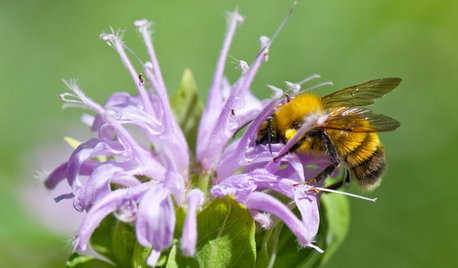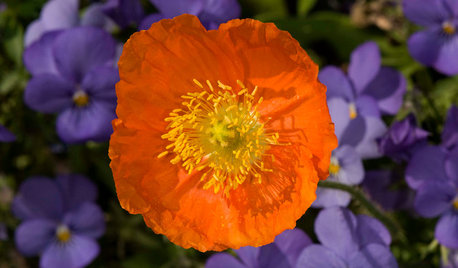Despite a horrible rose year, plagued with draught and ravening rodents who ate around half of this year's hip crop (the cute kind, which I'm legally forbidden from eliminating), I did manage to collect a couple of hundred hips this year, and did some seed counting.
To those of you who've made any attempt to breed a wide range of roses, few of these numbers will hold any surprises. For those who haven't yet, but might, this should give you an idea of the challenges involved in breeding certain classes.
Species roses/crosses:
1. Commander Gilette - 19.6 achenes/hip with 100% hip set.
2. Rosa glauca - 12 achenes/hip
3. Rosa majalis plena - 11 achenes/hip
Moderns:
1. Don Juan - 17 achenes/hip, 100% set
2. Apricot Nectar - 10 achenes/hip, 100% set
3. Lavender Jewel (mini) - 5 achenes/hip
Bourbons/HPs:
1. "Grandma's Hat" - 8.1 achenes/hip, with around 50% set rate
Gallicas:
1. Saint Nicholas - 13.25 achenes/hip with 100% set
2. Tuscany Superb - 5.0 achenes/hip, almost all set
3. Rosa Mundi - 3.8 achenes/hip, almost all set
Damasks, Albas
1. Celsiana - 2.7 achenes/hip with at least 1/3 set.
2. Autumn Damask - 1.1 achenes/hip, but only if one disregards all of the empty hips (at least 1/3). Around half of blooms produced hips, whether full or empty. In my experience, no ancient Damask does much better than ~1/3 achene per bloom, if that.
3. Celestial - 1.0 achenes/hip, less than 1/4 set. Some Albas set more frequently, but the seed count is unfortunately typical.
Portlands, Centifolias, Mosses, Burnets, Sweet Briars
1. N/A, all members of these classes had their hips completely devoured.
== Comments ==
For hundreds of thousands of years, Mother Nature had a monopoly on selecting roses, and the only things she selected for were the ability to survive and reproduce. Then, a few thousand years ago, humans started selecting them using completely different criteria. At that point, propagation could take the place of natural reproduction in garden roses, and those which produced little or no seed might yet (artificially) survive for centuries or millenia.
At first we grew Musks and Gallicas, which were healthy and fertile. Then a cross of the two was selected, but didn't have what it takes to survive on its own. Was it very fertile? Who knows? But, before it went extinct, it crossed with R. fedtschenkoana. The resulting Damask -- propagated from one single plant -- became one of humanity's favorite flowers, and was cloned across Eurasia. Over the next couple of thousand years, it sported several times, but we have no proof of any offspring before 1400 (Maiden's Blush), an imposing record of failure at sexual reproduction. After that, a number of varieties were produced, but none of those which have survived are good seed bearers, the best of them do about 2 seeds per hip, and can only manage that because they're more Gallica than Damask. The original plant's clones (Autumn Damask, York and Lancaster, Kazanlik, etc.) can't get close to 1 seed per pollination. Poor seed production could be considered a species trait.
Albas are not very different. While Gallica is fertile enough, and many caninae average over 20 achenes per hip, I've never heard of an Alba which regularly makes hips with over 2 seeds. Usually, it's one lone seed.
Centifolias, descendants of both of those classes, have been through generations of human selection, so their fertility is worse still. People wanted extremely double blooms even if it meant no space would be left for a functional reproductive system, and that's what they got. Centifolias have sported a lot, and their pollen's fine if you can collect any, but on most cultivars it will take a number of pollinations to get one seed. As with Damasks, the only ones which seem halfway capable of making babies are those with affinity for Gallicas, like Chapeau de Napoleon, or the occasional Centifolia/Agathe.
By the 1780s, Europe had discovered pollination, freeing humans to cross roses however they chose. Obviously, they made some beautiful roses, but without much screening by Mother Nature, the roses tended to get ever more sickly and reproductively disabled. The sickliest naturally died out, but plenty of amazingly sterile examples are still around. "Glendora," Zepherine Drouhin, Duchesse de Rohan... I could go on and on. In theory, most can be used as pollen parents, but in practice they're genetic dead ends. They're just too hard for people to want to work with.
One of the reasons they're too hard is because of something else that happened in the 1800s, that changed relative values of cultivars. People started breeding reblooming chinensis hybrids. The genetic basis of their rebloom is different than in European roses, it's much more dependably passed on to progeny, can result in year round, nonstop bloom, and the babies will bloom and rebloom at least a year sooner than their European counterparts would. Add all these factors together, and the breeding of a reblooming chinensis became MUCH cheaper and easier than breeding a new Portland, or even than crossing most OGR once-bloomers. Anybody who kept breeding Portlands was going to lose money. Since European and chinensis rebloom aren't genetically compatible, e.g., Gloire des Rosomanes x Autumn Damask will produce single-blooming offspring, there seemed little reason to keep working with difficult old Europeans, and roses which were overwhelmingly Asian started to dominate the market, as they still do.
In part, this was a good thing, because some Asian cultivars were a lot better seed bearers than the ancient European garden roses. Breeders still did unfortunate things, like producing roses with terrible root systems, and/or roses which could never survive unsprayed, but fertile seed parents have never again been lacking. As old European cultivars died out, chinensis' domination probably became irreversible. It might be 100 times more costly to breed a Portland than a chinensis rebloomer, but nobody will ever pay 100 times as much for it. One might breed a Portland out of love, but no businessperson who'd thought it through would do so for money. And outside of the more polar areas where almost nothing will bloom very long, how many people want once bloomers? With hundreds of chinensis hybrids available that will give >15 achenes per pollination, the breeding appeal of an OGR that gives 1/4 achene per pollination is going to be very limited indeed.
Can we improve the fertility of ancient garden classes without diluting them? I don't think anybody knows. One might be able to use the best seed bearers from among the Gallicas and caninae, and grow a more fertile Alba, but AFAIK no breeder has made a serious attempt to do that. With Damasks, 3/4 of their genetics (Musk and fedtschenkoana) are species roses with no real alternatives, only the 1/4 Gallica could be varied from the original formula, and might not be enough to matter much. The only real hope would be if the old Damasks and Albas happened to all be particularly infertile selections of those crosses, and that one might do better when selecting for parenthood potential. If my Musk had decided to produce any blooms this year, or if my dogrose were big enough to bloom, I'd be trying those out, just to satisfy my curiousity. Maybe next year.
The early 1800s answer to female infertility was to put pollen from less fertile roses onto ones which produced more seed. Since Gallicas were the only very domesticated roses around with good achene/hip ratios, Gallica hybrids were the final hurrah of the ancient classes, like Vibert/Robert's Hybrid Centifolias of the 1840s. The problem with this approach is that, with each generation, unless female fertility is a top priority in selection, it will only decline. The process can make wonderful garden roses, but they aren't likely to be the greatest breeding stock.
All of this ignores whether the seeds will rot unsprouted, or the offspring be uniformly sickly and unappealing. Smart breeders started figuring out the most prolific seed parents that lacked those vices, and bred them into good rose mothers, which they could develop, improve, and jealously keep to themselves, lest a competitor get their hands on any. When the chinensis revolution hit, they became irrelevant, and almost no known examples survive. Since breeding stock isn't usually released, hundreds of varieties probably went extinct without anyone noticing. Others, like the Single Centifolia, had already gone extinct, because their owners didn't want to share them.
Back to the numbers: from what I've seen, those are mostly fairly normal seed counts for their classes. Tuscany Superb has been shown by Paul Barden to be a worthy seed parent, and for me it made more seed than the "species" Gallica (Rosa Mundi) growing a few feet away, so it stood out a bit from the pack. So did Saint Nicholas, with copious amounts of seed. Others have grown out its selfings and a random seedling, and they were pleasant, disease resistant once bloomers. It looks a bit like a cross between a primitive Gallica and Hebe's Lip, but it was a found rose, so that's just a description, not even a guess. If you want something Gallic looking and aren't picky about ancestry, it and James Mason (3/4 Gallica, 1/4 huge-hipped HT) might be worth considering. (All of my James Mason hips were devoured this year, along with many others, but I've seen >10 seeds/hip with James Mason in the past, and hip set of close to 100%.)
"Grandma's Hat" was an outstanding seed bearer for me (as Bourbon-HP types go), and very easy to deal with, since it was in bloom almost nonstop from April to October, making fresh pollen transfers a moment's work. Others have tried it out over the last 20-odd years, and produced some pleasing offspring, so anyone interested in breeding Bourbons, HPs, or things resembling them, might want to consider it. I'd love to hear from those who've already grown out some of its progeny, because I have hundreds of seeds from it in the fridge, and hundreds more still ripening. One big plant made more seed than all my other roses combined, and it's not done blooming!
Celsiana is a funny rose, it looks and smells so midway between an Alba and a Damask that calling it either one seems like a deceptively incomplete description. That was why, when I opened the first hip and found four seeds, I was totally delighted. You'd never see that in an Alba, or pure Damask, or any but the most gallic of Portlands. Since fertile Gallica genetics aren't uncommon, that makes Celsiana the best ancient seed bearer I know of which shows clear affinity to the other classes. One might use it to make a fertile Agathe seed parent in a single generation, or as the mother of Damask, Alba or Centifolia garden roses. Assuming, of course, that the seeds sprout and the offspring aren't all terrible. (Celsiana has no recorded progeny, so quality of those seeds is uncertain.)
Pickering Four Seasons deserves acknowledgement for having some of the the fattest hips I've ever seen on a Damask, before the squirrels gobbled them. (It looks to be ~3/4 Gallica, so that's not a complete surprise.) Chapeau de Napoleon also had multiple hips available to eat, which was very encouraging for a Centifolia, and CdN has had a fine track record when others used it. Rosa majalis plena gets the final honorable mention, for 11 seeds/hip when HMF said it didn't even set hips.
Until something next blooms or sprouts, that's all I've got. Hopefully next year will be a lot better.

















ffffOriginal Author
Campanula UK Z8
Related Discussions
Shinko Asian pear observations and questions
Q
POA Control Observation!
Q
What class of OGR is best for alkaline clay soil?
Q
When and if do you fertilize OGRs?
Q
ffffOriginal Author
AquaEyes 7a NJ
AquaEyes 7a NJ
odinthor
ffffOriginal Author
Tessiess, SoCal Inland, 9b, 1272' elev
Tessiess, SoCal Inland, 9b, 1272' elev
AquaEyes 7a NJ
AquaEyes 7a NJ
ffffOriginal Author
odinthor
ffffOriginal Author
ArbutusOmnedo 10/24
ffffOriginal Author
cath41
ffffOriginal Author
AquaEyes 7a NJ
ArbutusOmnedo 10/24
ffffOriginal Author
ArbutusOmnedo 10/24
ffffOriginal Author
ffffOriginal Author
ffffOriginal Author
true_blue
Glenburn
ffffOriginal Author
ffffOriginal Author
Tessiess, SoCal Inland, 9b, 1272' elev
Tessiess, SoCal Inland, 9b, 1272' elev
Tessiess, SoCal Inland, 9b, 1272' elev
ffffOriginal Author
ffffOriginal Author
Tessiess, SoCal Inland, 9b, 1272' elev
Tessiess, SoCal Inland, 9b, 1272' elev
ffffOriginal Author
ArbutusOmnedo 10/24
true_blue
ffffOriginal Author
odinthor
ffffOriginal Author
roseseek
SouthCountryGuy Zone 4b-5 SE BC
ffffOriginal Author
AquaEyes 7a NJ
ffffOriginal Author
Tessiess, SoCal Inland, 9b, 1272' elev
roseseek
ffffOriginal Author